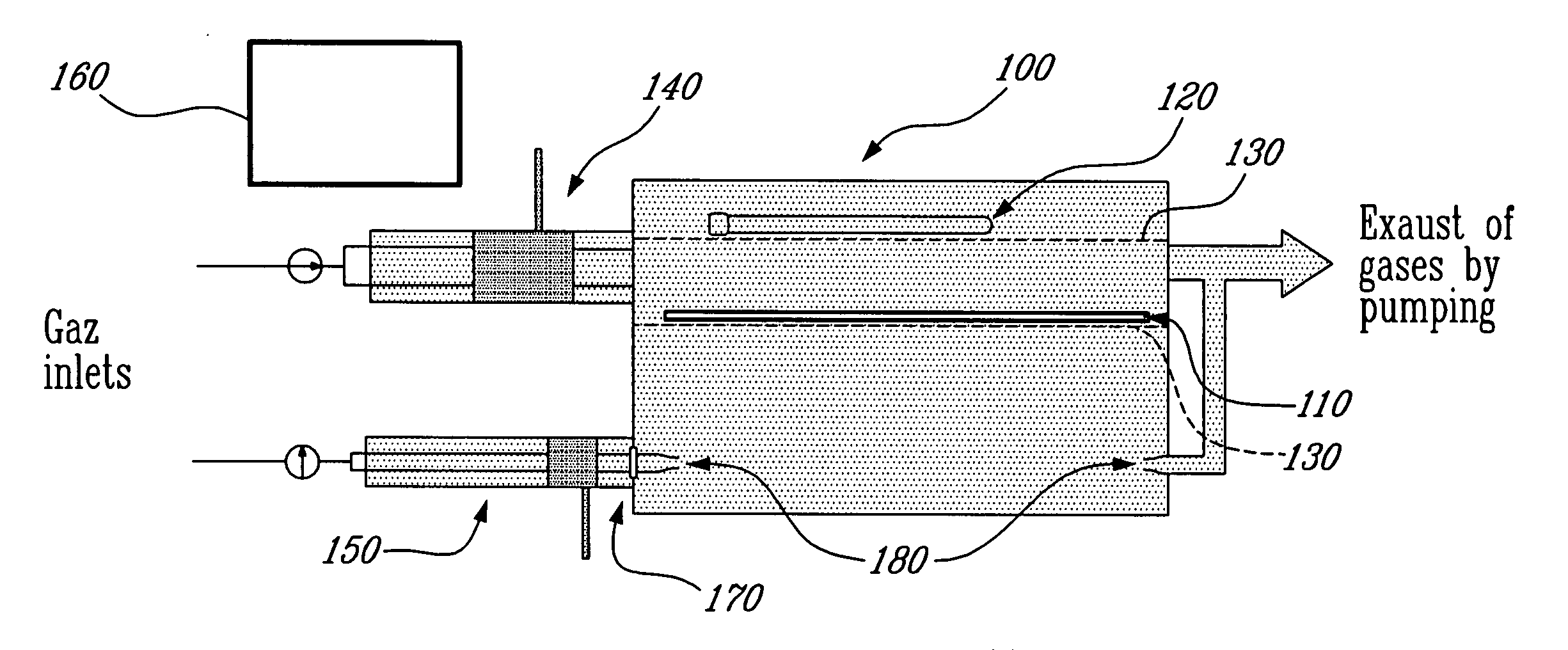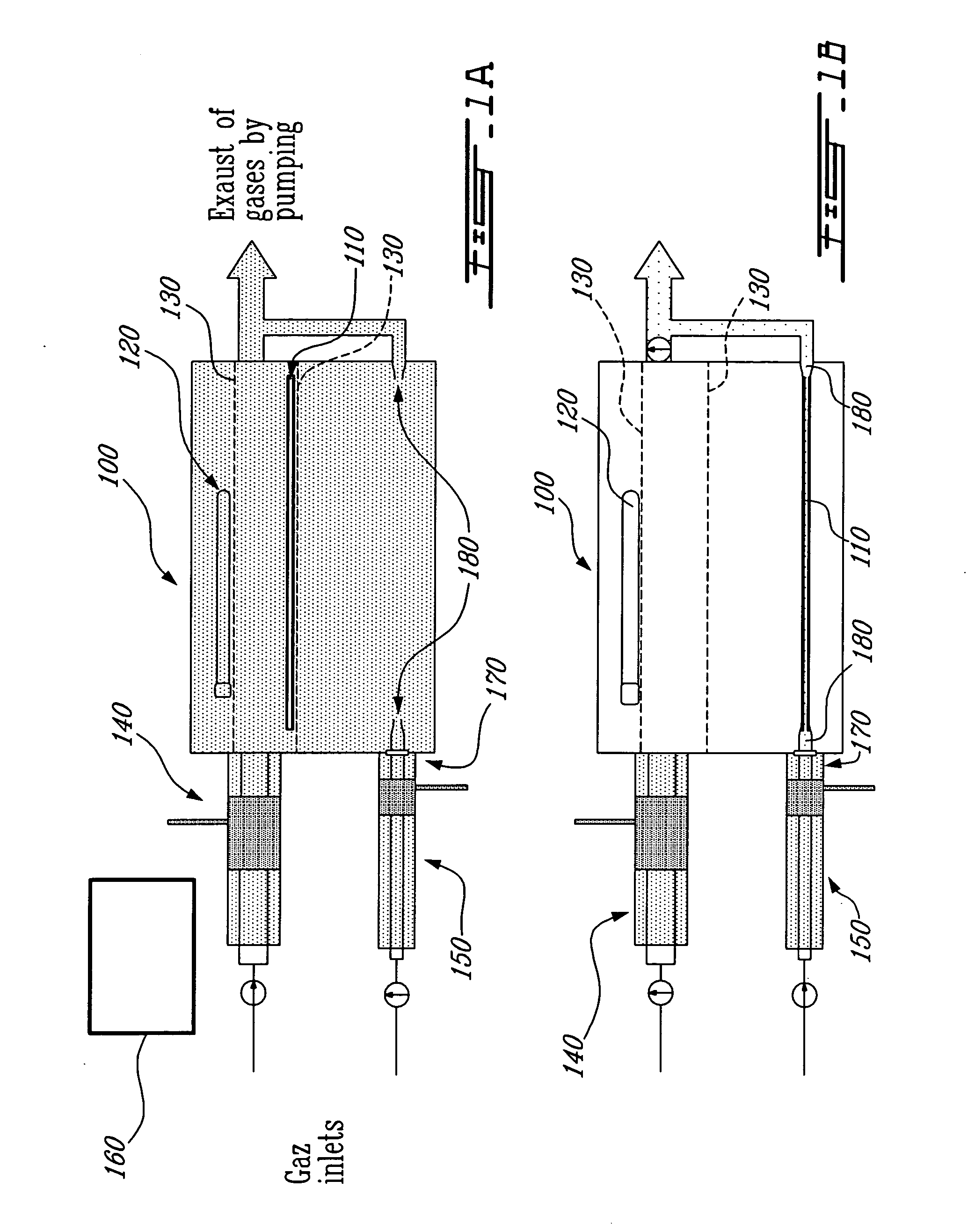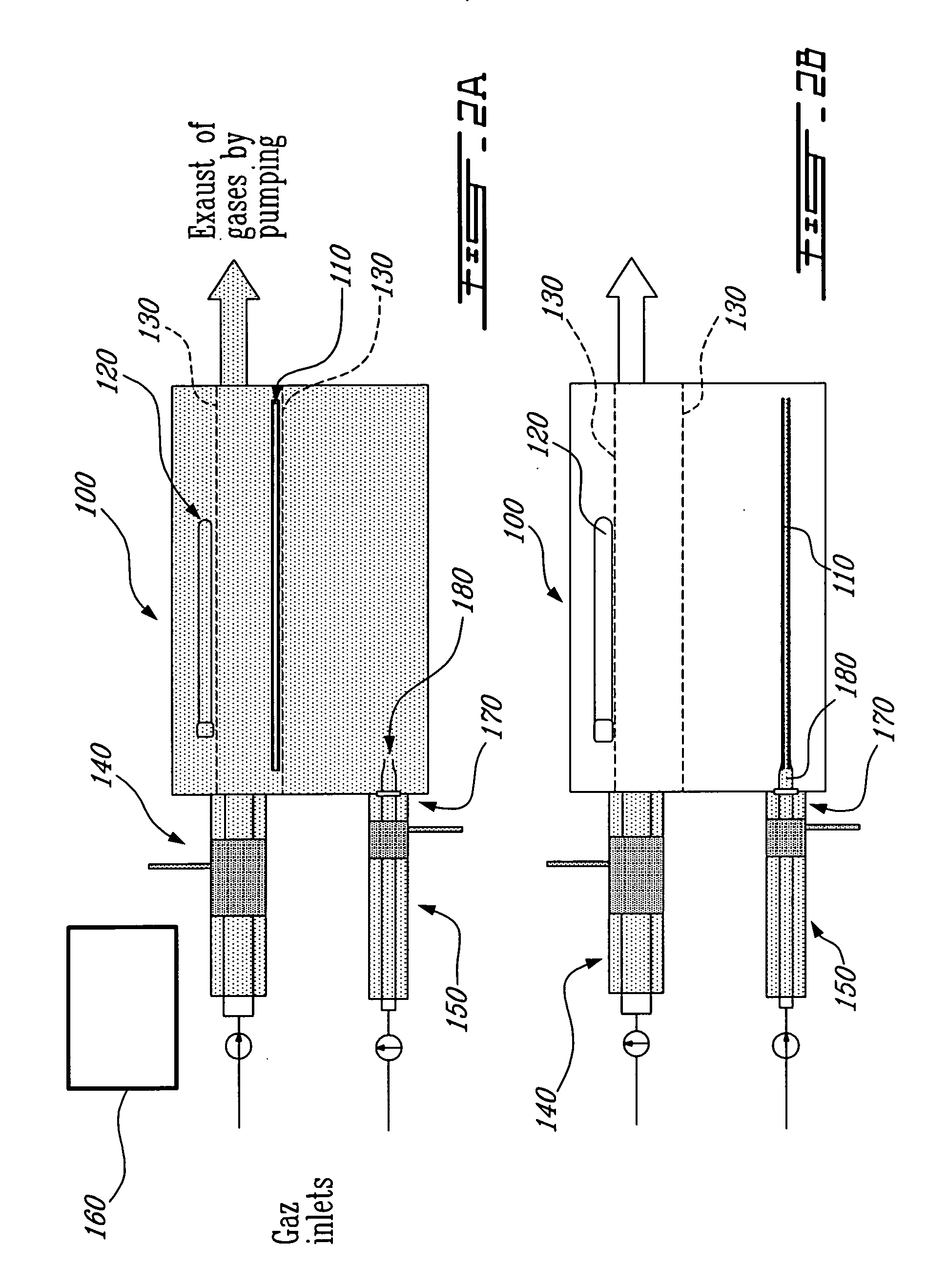Process for the plasma sterilization of dielectric objects comprising a hollow part
a dielectric object and plasma technology, applied in the field of plasma sterilization of dielectric objects containing hollow parts, can solve the problems of inability to sterilize a large number of polymers, in whole or in part, medical and dental instruments, and long-lasting operations, and achieve the effect of the same sterilization efficiency
- Summary
- Abstract
- Description
- Claims
- Application Information
AI Technical Summary
Benefits of technology
Problems solved by technology
Method used
Image
Examples
example 1
Experimental Assembling and Corresponding Results Concerning the Use of Surface Wave Discharge for the Inactivation of B. subtilis Spores Introduced into a Hollow Tube—FIG. 3.
[0185] This assembling shows how to use the propagation of a surface wave to produce a plasma inside a hollow tube of dielectric material without damaging the latter with heat and how to control the value of the gas temperature of the gas discharge to obtain this result. The temperature of the exterior of the hollow tube is advantageously measured with a thermocouple.
[0186] This embodiment of the process of the invention makes it possible to sterilize the interior of a hollow tube. In FIG. 5, element (1) represents the discharge tube, (2) the cross-section of tube 1 cm long and made of Teflon™, whose interior is contaminated, (3) a robox surface wave exciter and (4) the plasma.
[0187] The high frequency (HF) power input consists of an amplifier controlled by an oscillator, whose frequency is fixed at 100 MHz ...
example 2
Use of Two Different Gases to Carry Out Sterilization
[0192] A) In a first case, pure argon was used to produce, inside the hollow tube, a gas discharge with a power HF of 100 MHz, by propagating a surface wave. The discharge takes place in a quartz tube (molten silica) with 3 mm internal diameter (tube in which sections 1 cm long of a Teflon™ tube, contaminated with B. subtilis, see FIG. 5, were slid). To make sure that the discharge is uniform along the hollow tube, a very small discharge of gas (≦0.3 cm3 / min.) was used. Pressure was fixed at 0.3 Torr, a value that was determined from results obtained in 26 mm tubes described in the publication of M. Moisan, N. Philip, B. Saoudi, entitled “High Performing System and Process for Sterilizing with Gas Plasma at Low Temperature” and in Canadian Application number 2,395,659 filed on Jul. 26, 2002, supposing that the intensity of UV emission directly depends on electronic temperature, which depends on a law of similars in pR (product of...
example 3
Linear Shaped Applicator of Micro-Wave Field Disposed Along the Hollow Tube to be Sterilized and on the Exterior Side Thereof
[0196] First, there is described the block diagram of the principle based on resorting to a linear sterilizing applicator. With reference to FIG. 6, the micro-wave power flux that is transmitted by the generator to the feeding line flows through openings in the structure of the applicator giving rise to an electrical field that allows to provide a discharge in the tube facing it, in parallel fashion. Power that is not used at the end of the applicator is dissipated in a so-called matched charge (in order to avoid a reflection of the EM wave at the end of the applicator). It is possible to imagine such a system wherein the density of the plasma produced is uniform along the tube to be sterilized. The advantage of this system is that it produces a plasma of much lower density than that of the surface wave. Thus, we can use a HF supply operating at 915 MHz and i...
PUM
 Login to View More
Login to View More Abstract
Description
Claims
Application Information
 Login to View More
Login to View More - R&D
- Intellectual Property
- Life Sciences
- Materials
- Tech Scout
- Unparalleled Data Quality
- Higher Quality Content
- 60% Fewer Hallucinations
Browse by: Latest US Patents, China's latest patents, Technical Efficacy Thesaurus, Application Domain, Technology Topic, Popular Technical Reports.
© 2025 PatSnap. All rights reserved.Legal|Privacy policy|Modern Slavery Act Transparency Statement|Sitemap|About US| Contact US: help@patsnap.com



